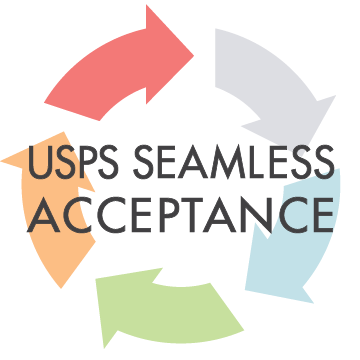Ten Tips to Drive Value & Engagement with Transactional Emails
Transactional emails can be a digital marketer’s best friend. They are likely the most relevant emails you can send out to your customers since they reflect what your contacts have already done – purchased goods or services, downloaded digital content, entered a contest, signed up for a mailing list or new account, etc. The metrics for engagement clearly show these type of messages driving spectacular performance, particularly for the top 25 percent of marketers. Here are some of the stats from the “2015 Email Marketing Metrics Benchmark Study” conducted by Silverpop.com/IBM Marketing Cloud:
- Transactional emails generated an average 44.9 percent open rate (20.8 percent for non-transactional emails). They did even better for top email marketers, with a 72.2 percent open rate (40.8 percent for non-transactionals).
. - The click-through rate on transactional emails was an average 10.4 percent (3.2 percent for non-transactionals) and 30.2 percent for top emailers (9.2 percent for top non-transactionals).
. - Transactional emails also generate a high click-to-open rate (how many email openers also click through): 20.1 percent compared to 12. 5 percent for non-transactionals and 51.2 percent for top emailers (28.5 percent for non-transactional email).
A transactional email is triggered by behavior such as a purchase, free trial sign-up, account creation or customer support contact. B2B transactional emails can include a link to a downloadable .pdf or slide presentation or confirm a webinar registration.
If you’ve already decided ‘yes’ on transactional emails, and you’re already using them, make sure you’re taking advantage of the following 10 tips for a good strategy. These tips will help you turn your transactional emails into opportunities to achieve your goals – initial purchase, additional purchases, sales contacts, or whatever you’ll need to grow your business.
1. Send out your transactional emails ASAP.
Your customers who have completed a transaction will expect to see follow-up emails in their inboxes pretty much immediately. That reduces their “FUD” (fear, uncertainty and doubt). Customers who transact on their phones will appreciate a prompt acknowledgement that their information went through successfully. Talk to your IT staff about coordinating your systems so that confirmations go out in real or near-real time. With online transactions, even a 24-hour delay can be considered as “too late”.
2. Use an identifiable sender name.
Most recipients look first at the sender, or “From” name, when deciding whether to open or trash your email. Put yourself in their shoes. Which would you recognize faster: “customerserviceonline” or “ACE Payments”? Does “DoNotReplySales@xyz.com” inspire confidence? Always choose a sender name that conveys immediate recognition and brand identification – like the one highlighted in the example below:
Your Mailed Postcard Order receipt from PrimeNet <AskPrimeNet@primenet.com>
To: ABC Advertising and Marketing July 29 at 10:14
Hello Jim Jones,
Thanks for your order of 10,000 Mailed Postcards! We’re preparing your mail pieces now and will notify you when they have shipped. Track your order (link).
Summary:
10,000 Mailed Postcards
Item:
Postcard with coupon, mailed, incl postage [other relevant details]
Qty: 10,000
Price: [$price]
Also, work with your IT team to make sure your system that sends transactional emails isn’t set to use a “From” email address or a name your recipients wouldn’t immediately recognize or trust, such as a personal or department name.
3. Include a detailed subject line.
A clear, branded sender name is step one in helping ensure your transactional email is opened.
Step two is a subject line that goes heavy on information. Testing will show you which construction drives more interaction. Consider these examples:
Basic: “Order confirmation” (Gives your customer no details.)
Better: “Your receipt for order #40605884699AB16 from PrimeNet” (If I order from you more than once, how do I know which is which?)
Best: “Your recent order of 10,000 Mailed 4/4 Postcards w/List and First Class Postage”
Never: “Thank you” (For what?)
You’ll need good integration among your business systems to achieve this level of personalization. So, having a good working relationship with your IT staff is essential. A default confirmation subject line is better than none, especially if it goes out in real time after a transaction, but you’ll build the most trust and value with a personalized one.
Add branding (logo, colors, etc.) to add some personality and replicate a real-life “thank you” experience. Include other content to make the transaction more memorable, such as a hotel manager’s greeting in a reservation confirmation or a thank you from your CEO.
4. Add secondary information in the pre-header.
The pre-header is the first line of copy in the email message body. Many email programs pull this line into the inbox, giving you yet another source of information besides the sender name and subject line. If you are unable to personalize the subject line, adding details to the pre-header help to get around that. Very few marketers utilize this information source. Too many will waste it with boilerplate copy such as “add-to-address-book” reminders or “view as webpage” information. Consider using a simple “Order Confirmation,” “Your order has been shipped” or name of the product (or first item for multiple-item purchase) if this wording isn’t in the subject line.
5. Answer your recipient’s questions in the message body.
“Did my transaction succeed?” is likely the most important question your customers will have following a transaction. It’s just not enough for you to say, “Thanks for your purchase. We’ll be in touch.” You should list products by name (with images if possible), price and payment source. Include information that will help your customer take the next steps, such as tracking a package, scheduling an appointment or accessing new-user information.
(For more, see No. 6 below).
6. Go above and beyond the transaction.
If you know that 50 to 70 percent of your readers will be opening your transactional messages, look for ways to leverage that initial automatic response for more customer satisfaction and deeper engagement. For example, tell people where and how to log in to an online product or include a “getting started” guide. Share details about mailed content, such as links to web tracking software. For a product purchase, especially a high-ticket product or complex purchase, add links to demo videos, FAQs and/or a user forum.
7. Design for mobile screens.
Although transactions still happen more often on desktops, your customers may be reading their transactional emails first on their mobiles. Finger-friendly navigation and tactics such as these listed below will make your emails informative and interactive for viewers using many different screens:
• Use large buttons instead of text links.
• Use responsive design to minimize or hide secondary information.
• Limit images to those most relevant to the transaction.
• Instead of embedding video, capture an image and link it to the full video on the host site.
8. Add a cross-sell or upsell suggestion.
So, your customer has purchased a product, signed up for a free version of your service or otherwise converted. Now, show them how to move to the next phase, whether it’s upgrading to your paid service, joining a loyalty program or purchasing again in the future. Giving customers reasons to click through from your transactional emails can bring long-term loyalty. Here’s where you will introduce strategic product suggestions or recommendations for add-on purchases or upgrades, or ask buyers/users to review their experiences. All of these engagements will drive your customer back to your website.
9. Persuade non-subscribers to opt in to your email program.
Include an invitation to opt in for marketing emails in your transactional messages. A dynamic copy block can display your email invitation to non-subscriber customers, while serving existing subscribers an alternate offer that promotes your mobile app or other email streams. Don’t merely say, “Opt in for our email.” Instead, stress your subscriber-only email benefits such as exclusive discounts or sales.
10. *IMPORTANT* Be sure to comply with email regulations governing unsubscribes and marketing content in transactional emails.
Many anti-spam laws around the world have specific rules that differentiate between transactional and commercial messages. For example, the U.S. CAN-SPAM law says the following: “If a recipient reasonably interpreting the subject line would likely conclude that the message contains an advertisement or promotion for a commercial product or service or if the message’s transactional or relationship content does not appear mainly at the beginning of the message, the primary purpose of the message is commercial.”
So, when a message contains both kinds of content – commercial and transactional or relationship – if the subject line would lead the recipient to think it’s a commercial message, it’s a commercial message for CAN-SPAM purposes. Similarly, if the bulk of the transactional or relationship part of the message doesn’t appear at the beginning, it’s a commercial message under the CAN-SPAM Act. If your subject line or the primary focus in your transactional email reflects promotional content and not the transaction, then CAN-SPAM would consider your email as commercial. To comply with the law, you would have to add an unsubscribe link and instructions.
How to Make Sure Your Transactional Emails Deliver – and Get Delivered
If you want to drive the greatest benefits from your transactional emails, you have to have everything working properly on the back end of your email systems. For best results, talk to your IT staff about sending your transactional and marketing emails from different Web domains and IP addresses. Keeping these two systems separate means that whatever happens on one domain or IP address won’t impact your sender reputation and deliverability on the other.
For example, your transactional emails could get sidetracked if your marketing emails are hogging the sending queue. Given that many transactional emails are time-sensitive, a delay of several hours can reduce their value. If the worst happens, and your marketing IP should get blocked by an email server or blacklisted, you’ll still be able to send transactional emails. Identifying, troubleshooting and fixing issues are easier when the communication lines are separate.
Use this information as a guide, and you’ll be well on your way to successful transactional engagement which can serve to increase your conversions even further.












